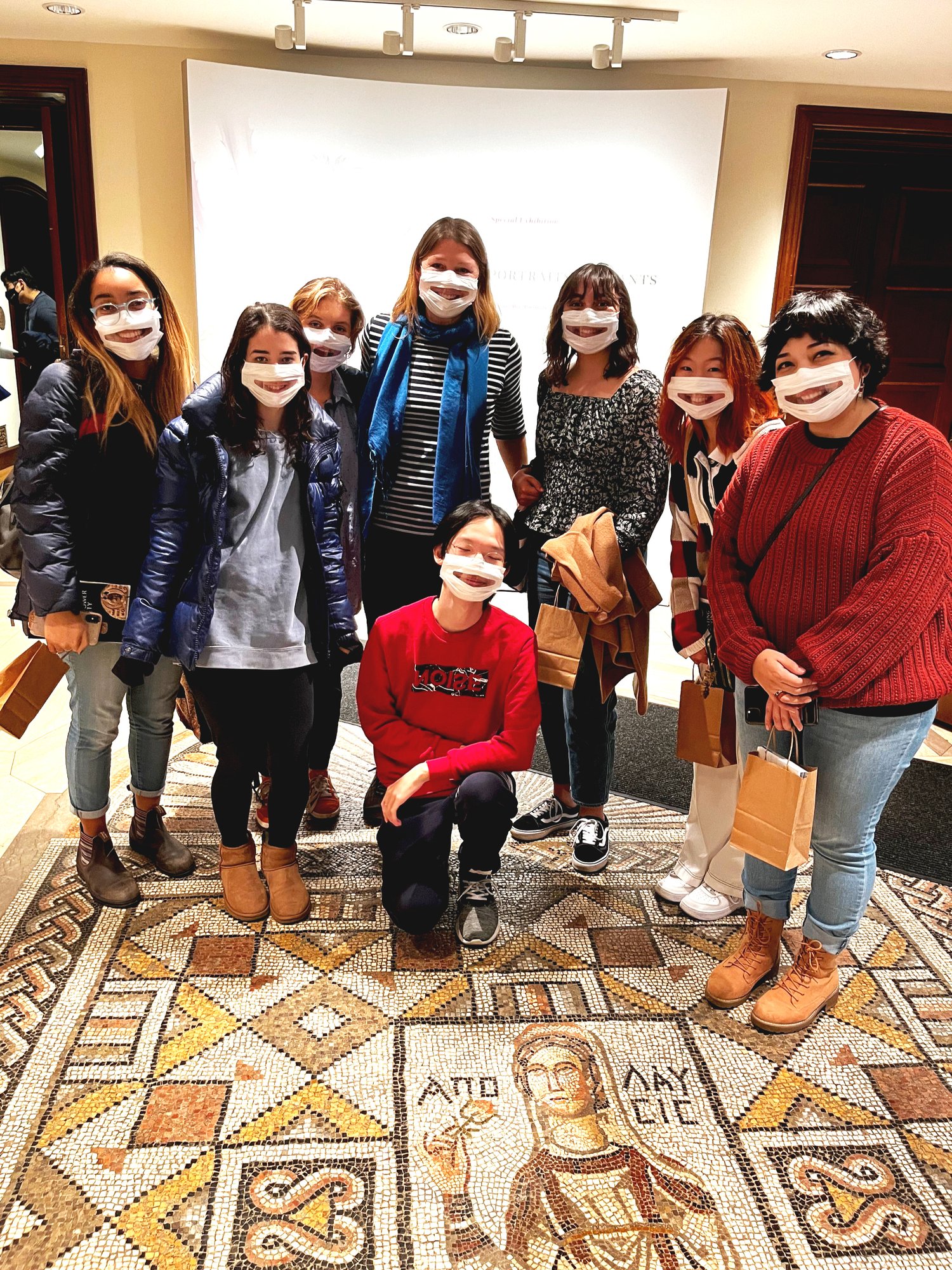Conservation of Recovered Mosaic at Princeton University
While researching the conservation of the Antioch mosaics, I came across a very interesting case regarding a mosaic placed in the threshold of the Architecture Laboratory at Princeton University. Princeton was part of the excavation team that also included members from the Worcester Art Museum, the Baltimore Museum of Art, Harvard Art Museums, and Dumbarton Oaks. Around 300 ancient Roman floor mosaics were uncovered, and Princeton received a part of the find.
The lifting process during excavation itself was extremely destructive. The mosaic was first stabilized with interior losses filled with cement and the surfaced was faced with animal glue and cloth. Then the bedding mortar was then disrupted while digging around the mosaic. Blocks were added for structural support. The backing mortar was then removed. A wooden frame was constructed to place iron rebar bars for stabilization, and the back was filled with cement for structural stability.
The mosaic was rediscovered in 2011 in the vestibule of the Architecture Laboratory where it has been since 1949. It was installed here as part of the renovation of the building and had not been moved after. Being outdoors, the exposure of the mosaic to the elements has left it in poor shape. The conservator working with Princeton was Leslie Gat. The panel was part of a border of a larger piece that was excavated near the House of Phoenix (DH-256 Dig C). The mosaic consists of three heads, the heads on the corner are female and according to Princeton University they think they are possibly masks of maenads. The goal for the conservation was to lift the mosaic out of the ground successfully without inflicting further damage so that work could be done in the conservation studio.
The concrete curb was removed and revealed that the mosaic was about two inches of concrete thick. Steel slides and Teflon sheets were installed to go under the mosaic to aid with transport onto the pallet where it was strapped down.
The rebar in the cement corroded and expanded which cased many of the tesserae to be damaged and knocked off. When in the ground, areas that were lifting were covered with cement, which left areas of tough concrete. In areas where it was feasible, the cement was removed where tesserae were found underneath and reinstalled. A plaster fill was then used to cover the empty spaces left by the cement. After, conservation was completed it was reinstalled in one of Princeton University’s buildings.
Video describing the process of conserving a mosaic
Patricia Kolodziejski
